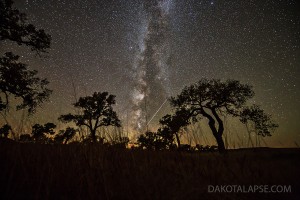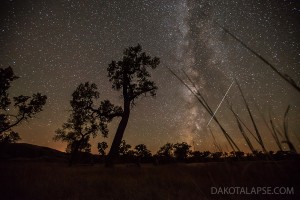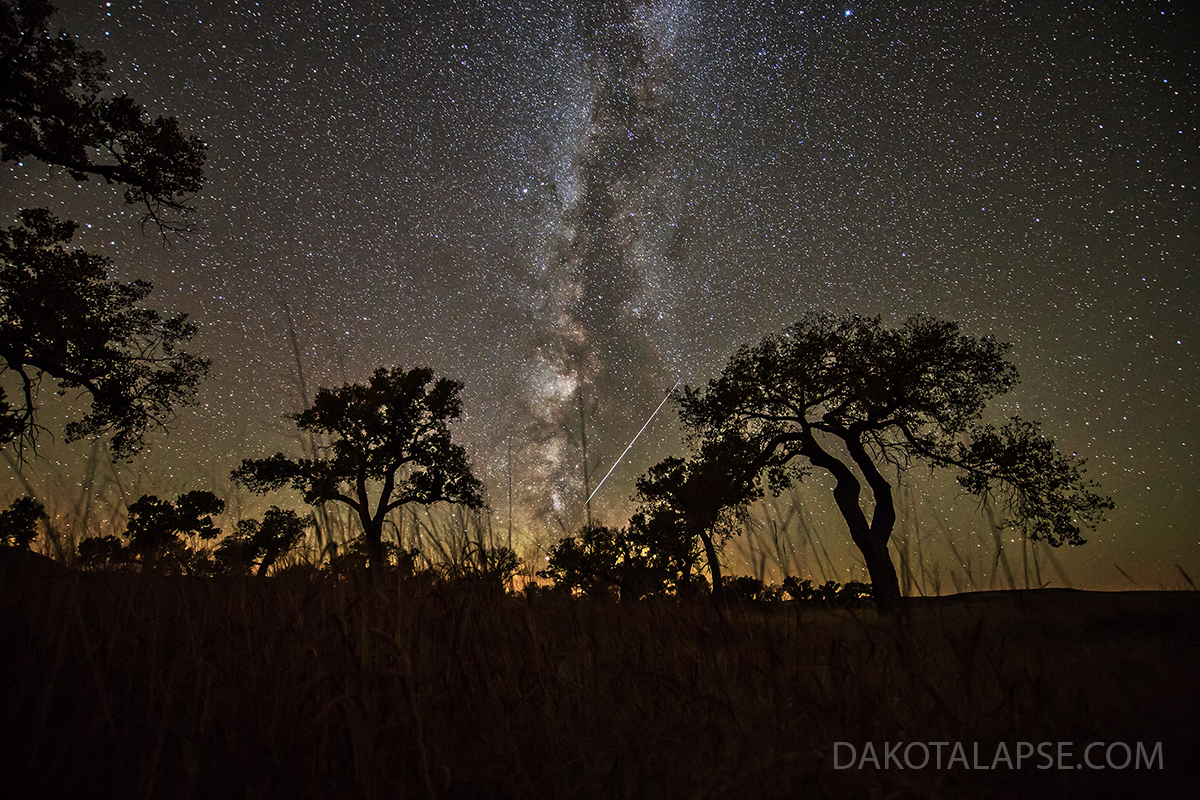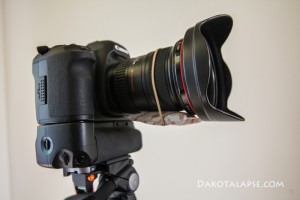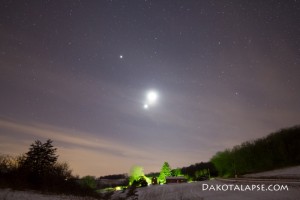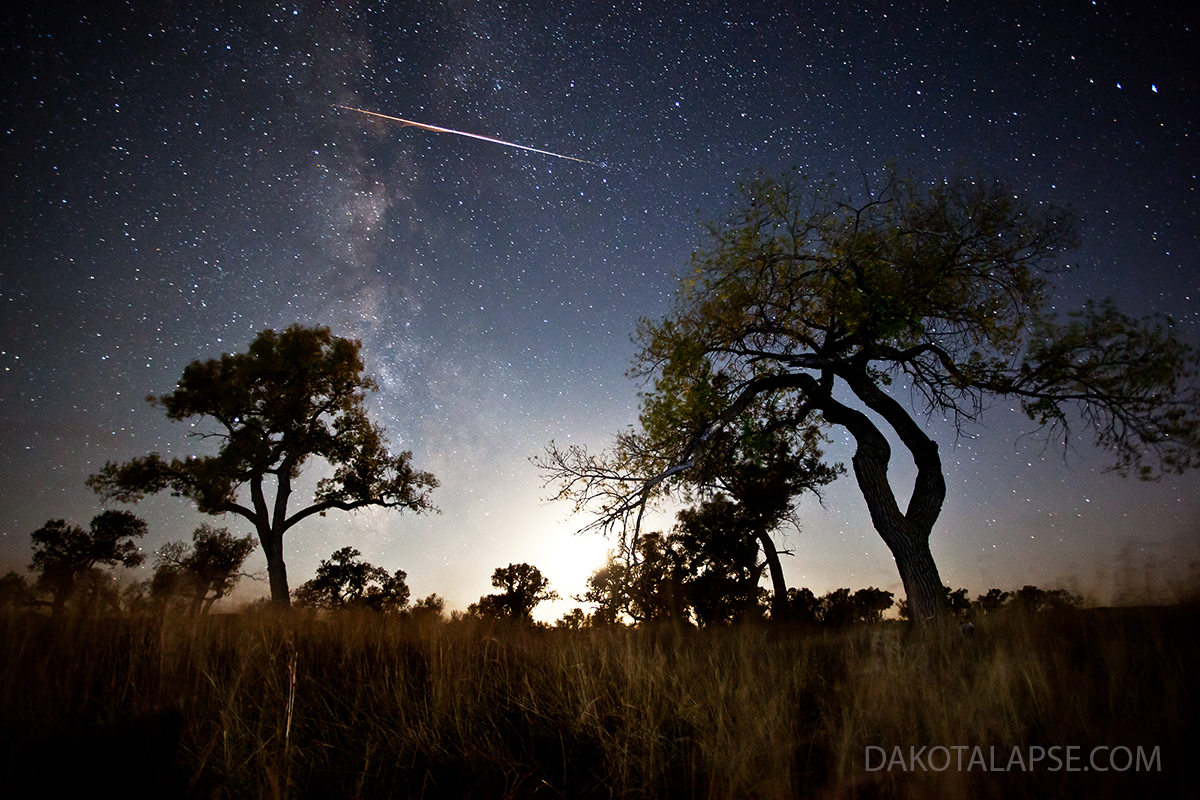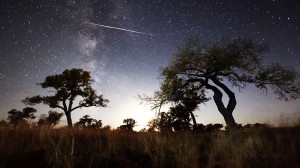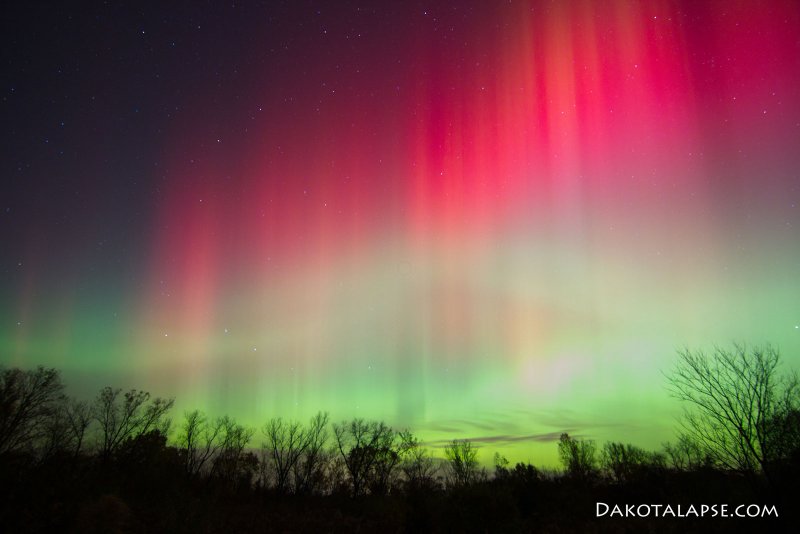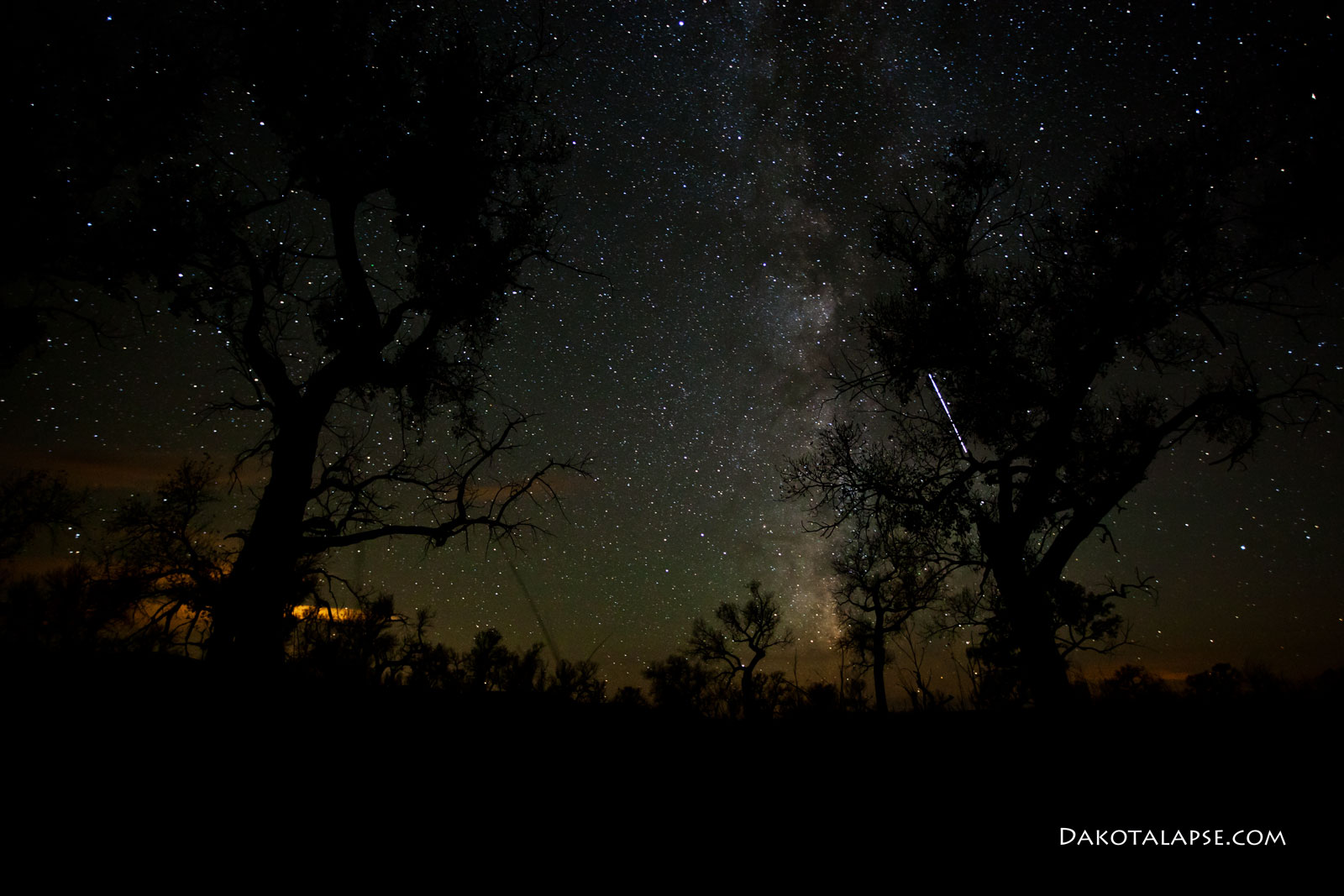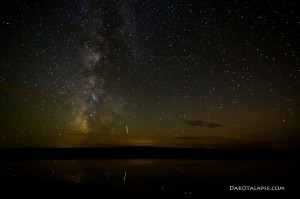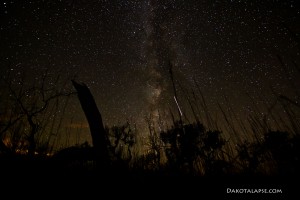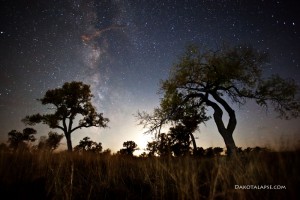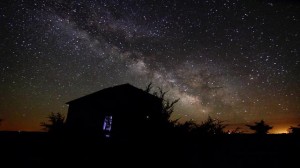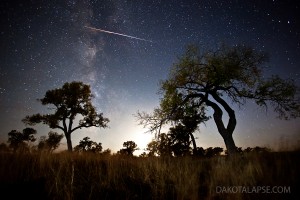
This extended cut excerpts video, features Simon Wilkinson’s music. Buy and download the 23 minute extended cut below.
_______________________________________________________________________________________
What you see is real, but you can’t see it this way with the naked eye. It is the result of 20-30 second exposures edited together over many hours to produce the timelapse. This allows you to see the Milky Way, Aurora and other phenomena, in ways you wouldn’t normally see them.
In the opening “Dakotalapse” title shot, you see bands of red and green moving across the sky. After asking several astronomers, they are possible noctilucent clouds, airglow or faint Aurora. You can also see the red and green bands in other shots. This video has Milky Way, Aurora, Meteor and Moon lit night timelapse. This was shot entirely at night. If it looks like daytime, it is actually the moon lighting up the landscape.
This was shot with Canon DSLR’s as stills, and consists of over 33,000 stills shot in RAW format, at the highest resolution possible, on each camera.
Music on the Video
Featuring two original scores by Simon Wilkinson http://www.thebluemask.com and also some from his Royalty Free Collections. This does not have Bear McCreary’s music on it, his music is on this video.
Order Prints and Gallery Wraps
_____________________________________________________________________________________
[add_to_cart item=”1010″ quantity=”user:1″ ]
[add_to_cart item=”1009″ quantity=”user:1″ ]
____________________________________________________________________________________
South Dakota residents must pay 4% sales tax.
All downloads are for home or personal use only. May not be incorporated into a production, altered or uploaded to other web sites. For those uses contact.
____________________________________________________________________________________
The Temporal Distortion feature is 23 minutes of night timelapse featuring the following segments
Milky Way Segment 8+ minutes
Aurora Segment – 2+ minutes
Desert (Colorado/Utah) – 2+ minutes
Moon Light – 6 minutes
Deer Lapse – 1.5 minutes
Fall Skies – 2+ minutes
Behind the Scenes (timelapse of timelapses)- 1 minute
You will see the same scenes as the online Temporal Distortion video. But this was a completely different edit, with the shots seen at full length, and you will see a bunch of new ones.
_____________________________________________________________________________________
The Aurora were shot in central South Dakota in September 2011 and near Madison, Wisconsin on October 25, 2011.
Most of the video was shot near the White River in central South Dakota in September and October 2011, but there are other shots from Arches National Park in Utah, and Canyon of the Ancients area of Colorado during June 2011.
Canon 5D Mark II and Canon 60D
Canon 16-35, Tokina 11-16
Shot in RAW format. Manual mode, Exposure was 30 seconds on most Milky Way shots, 15-30 seconds on Aurora. ISO 1600 – 6400 F2.8.
Thanks to Dynamic Perception for their support, and for making the Stage Zero Dolly, which I used on most of the shots.
I used a Kessler Crane pocket dolly and KC Lite Crane on a few shots as well.
Photography and Editing – Randy Halverson
Music – Simon Wilkinson
Additional Photography – River Halverson
Production Assistants – River Halverson and Kelly McIlhone
Opening title by Gus Winkelman // Winkelmedia LLC // Contact Guswinkelman@gmail.com for creative solutions
Available in 4K Ultra HD for licensing.
Contact for licensing footage, or anything else.
Randy Halverson
dakotalapse@gmail.com
Follow:
Google + https://plus.google.com/115274420552571826637/posts
Facebook http://www.facebook.com/dakotalapse
Twitter http://www.twitter.com/dakotalapse
Still frames of some additional shots on the extended cut.
[nggallery id=6]

